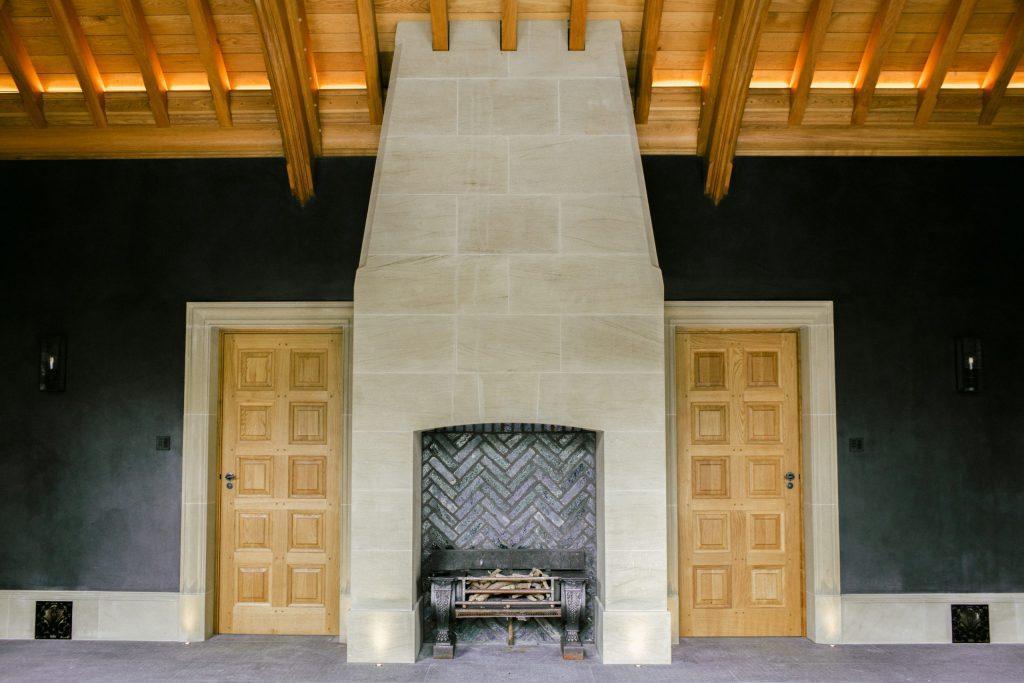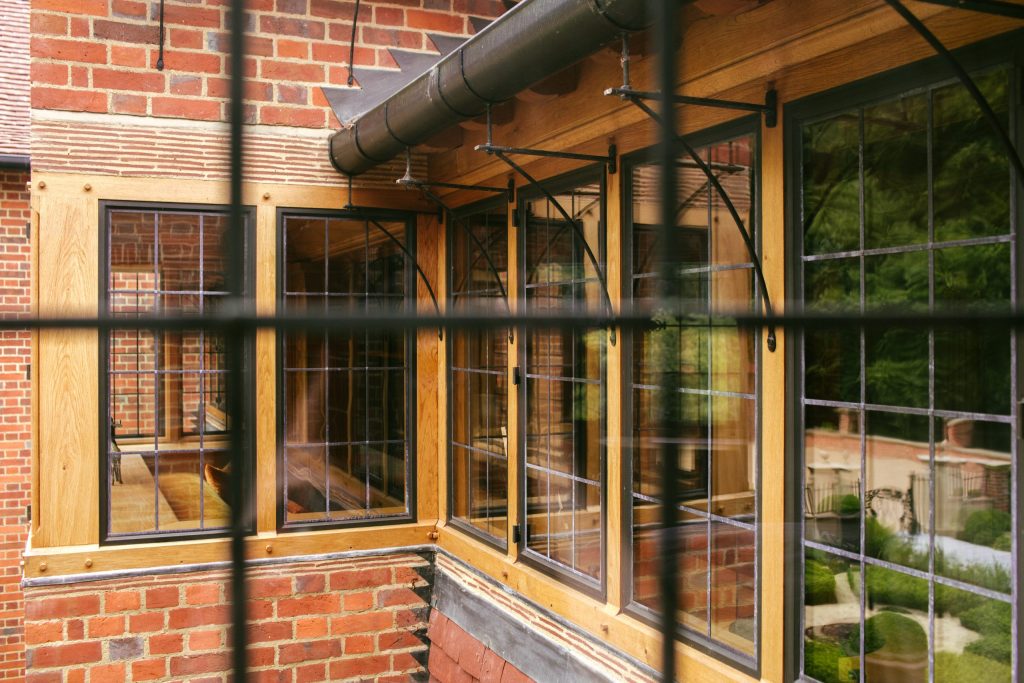Series Two
Art in Architecture – Chapter 3
Written by Jonathan Lees RIBA.
Architecture; an Art or Profession?

Private Pool house and Spa on a Country Estate – Jonathan Lees Architects
Listen to the audio version
The subject of whether architecture is an art or a profession is discussed in a series of essays written by T.G Jackson, Richard Norman Shaw and with contributions from W.R Lethaby and Ernest Newton, some of the leading Arts and Crafts Architects of the day in the book ‘Architecture a Profession or an Art; thirteen short essays on the qualifications and training of architects’ published in 1892. The book is largely a rebuke of the requirement for the profession to be policed by parliament and for qualifications to be introduced. Whether this is right or wrong it is not the purpose of this writing, but it does contain a fascinating insight to the present reader as to the position of the profession at a time when the Arts and Crafts movement had taken hold.
The relevance to my writing here is resonant. The first page of the introduction reads as follows:
‘Legislation has at last reached the domain of Art, and it has been seriously proposed to charge Parliament with the duty of providing the public with good architecture and properly qualified Architects.
It is not likely that anyone, whether artist or amateur, who knows what art really means, will be taken in by this chimerical project. To a true artist his art is an individual matter purely between himself and his artistic conscience. No stamp of government approval on his work can have any value in his eyes. No certificate of merit by a public board can raise him in his own estimation, for he knows very well what it should be worth; and no failure to obtain such a certificate could upset his matured views and convictions. He must go his own way; his art must absolutely be free, unfettered save by the canons of truth and nature, the limitations of human sense, and the possibilities of his instruments and his materials’.
(Introduction, page 1, to ‘Architecture a profession or an Art; thirteen short essays on the qualifications and training of architects’ published in 1892. T.G Jackson A.R.A)
‘….the nature of architecture and the importance of it as an art form.‘
I am not concerned with his comments on the institution of architecture and whether it is good or bad, there is over a hundred years of experience gained since the writings and a great deal has been learnt that has no doubt strengthened the institution and the position of the Architect. My concern in this writing is the relevance of the nature of architecture and the importance of it as an art form.

Art in every corner of a building – Jonathan Lees Architects
‘….the art of building substantially and conveniently, as well as beautifully.‘
Jackson goes on to say ‘But architecture too is an art as much as a painting and sculpture, and can only live in health as long as she lives like them in a state of liberty’ (pg viii T.G Jackson A.R.A). Although Jackson is trying to prove to the reader why architects should not be ‘shackled by formulas’ he is also debating why architecture is treated differently to the arts.
He suggests architecture is just this; ‘that she is not a simple art like painting and sculpture, but a complex art; a fine art on one side, a useful art on the other; she deals with construction, and her work must be not only solid but comely, and not only comely but strong; and it must be designed with conveniency and fitness, for it has to be used and lived in, and no one will value it for its beauty if it fails in these respects; in short, architecture is the master – builders Art, the art of building substantially and conveniently, as well as beautifully’. (pg ix T.G Jackson A.R.A)
Architecture, is to many, a form of public art, which is perhaps why the public feel a need for it to be policed in some way. Some would argue that architecture has a utilitarian side that pulls it away from the domain of art, but I do not think this is the case. Just because a building is utilitarian does not mean that the building cannot be beautiful.
‘……Classicism in particular has received a great deal of disdain in the recent decades….’
I explore this subject in other writings on the roots and many branches of classical architecture, but its relevance here is still significant. Adam, Wyatt and Charles Dance looked to antiquity for inspiration rather than the Renaissance – the reasons were many and were the result of social, economic and empirical factors, but not least because they saw the ancients as the greatest period in human history, with particular reference to the golden age of classical Greece. The likes of James Stuart and Nicholas Revett visited Greece in the 18th Century, which was not possible before this due to the political situation in Greece and Turkey, to measure the ancient temples and public buildings that still stood and to bring these texts back, with their details being published as a guide for others to use.
‘……Soane brought an inventiveness that was so wildly different…..’
Thus, what Architects have done before has directly influenced the modern architecture of the day, and during this time, led to some of the finest buildings in the history of the British Isles that has made our country one of the richest architectural environments in the world.
Of the great Neo Classicists, Sir John Soane is perhaps the last and the most influential of all with relevance to my field of study. Whilst the buildings of Adam, Wyatt, Cockerell and Smirke are all accomplished works of art (most of them anyway), Soane brought an inventiveness that was so wildly different it was the equivalent of the most ultra-modern, strikingly different structure being built today. Think of the difference between a Victorian railway station and one of those designed by Santiago Calatrava. Soane’s style was unique, his designs elegant and artistic without unnecessary decoration. His artwork, much of it done by Joseph Gandy, is eye wateringly impressive, and for anyone who has been to the John Soane museum, the feeling that you get as an artist or amateur alike when you look at the collection of drawings in the galleries is one of awe and inspiration. Whether you like his buildings or his designs is not the point, beauty is as is often described, in the eye of the beholder. But the art demonstrated in his work is unquestionable.
Return to the Writings Library for more essays and Project Profiles
